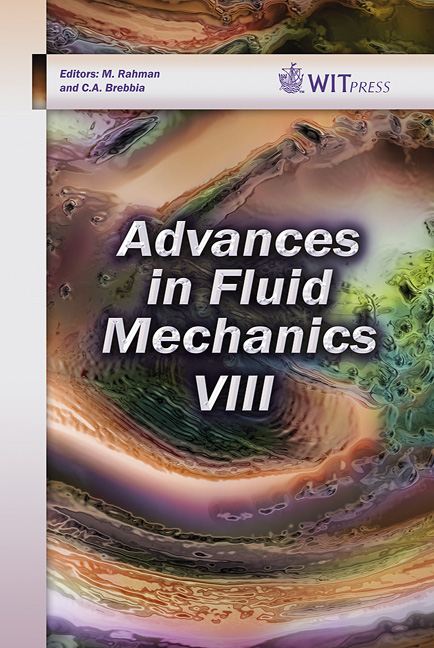Characteristics Of Boundary Layer Flow Induced By A Solitary Wave
Price
Free (open access)
Transaction
Volume
69
Pages
13
Page Range
267 - 279
Published
2010
Size
3,658 kb
Paper DOI
10.2495/AFM100231
Copyright
WIT Press
Author(s)
C. Lin, S. C. Hsieh, S. M. Yu & R. V. Raikar
Abstract
Characteristics of boundary layer flow induced by a solitary wave C. Lin1, S. C. Hsieh1, S. M. Yu1 & R. V. Raikar2 1Department of Civil Engineering, National Chung Hsing University, Taiwan 2Department of Civil Engineering, K. L. E. S. College of Engineering and Technology, India Abstract The experimental results on the characteristics of bottom boundary layer flow induced by a solitary wave, obtained using high speed particle image velocimetry (HSPIV) and particle trajectory techniques, are presented in the paper. The particle trajectory technique is particularly used near the bottom boundary to visualize the flow field. The velocity distribution in the bottom boundary layer is classified into two types from the point of view of similarity analysis: one pre-passing and another post-passing of the crest of solitary wave across the measuring section. The velocity distribution in the bottom boundary layer before the passing of solitary wave-crest was regressed using two hyperbolic tangent functions. The free stream velocity u and the boundary layer thickness are found to be the suitable characteristic velocity and length scales to obtain the similarity profile. However, other characteristic properties of the boundary layer such as displacement thickness, momentum thickness and energy thickness were also used in the analysis, but they are proved to be mere multiples of boundary layer thickness . On the other hand, to attain the similarity profile for the velocity distribution for post-passing of the crest of solitary wave, the characteristic velocity scale (u Um), where Um is the maximum negative velocity, and length scale: maximum thickness of reverse flow b0 is used. Keywords: bottom boundary flow, solitary waves, flow visualization, high speed particle image velocimeter, similarity profile.
Keywords
bottom boundary flow, solitary waves, flow visualization, high speed particle image velocimeter, similarity profile





